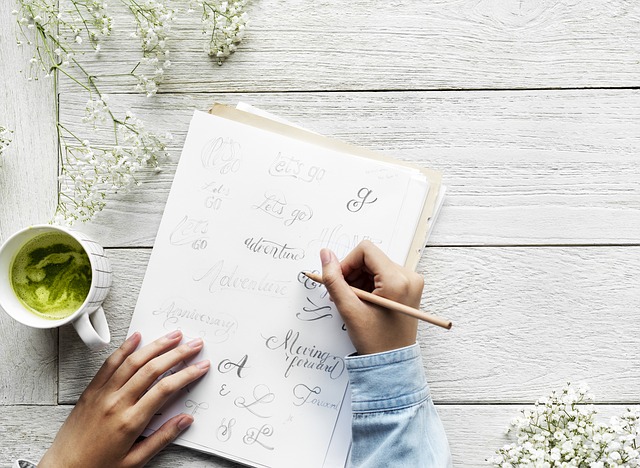I was approached recently by a young man who was experiencing severe anxiety. He was able to cope well with his work but had all kinds of difficulties coping at home, including endless self-doubts, negative self-stories and an inability to relax or concentrate. He indicated that he had “tried everything’ – meditation, mindfulness practices and reflection.
He found, for example, that “reflection” only resulted in his entertaining negative thoughts about himself and re-visiting his destructive self-stories. So, reflection for him resulted in a downward spiral rather than a release from self-deprecation.
What does “tried everything” mean?
The first consideration is how did he approach these attempts to develop mindfulness and reduce his symptoms? Given the young man’s level of agitation, it was likely that his efforts were somewhat frantic and unfocussed. One could question whether he engaged in a sustained meditation practice in a focused way, e.g. working on his self-stories with the aid of a meditation teacher or meditation group.
One of the issues is that there are so many different forms of meditation that it is tempting to “try them all” and flit from one form to another, without addressing your specific needs or the causal factors of your depression or anxiety. This is where a professional psychologist or dedicated professional group could help. Organisations like Beyond Blue and the Black Dog Institute can help by providing knowledge, resources, group support, access to programs and advice in identifying a suitable medical practitioner, psychologist or psychiatrist. Other specialist carer support groups can assist people who are experiencing anxiety or depression as a result of caring for someone who has a long-term need for care and support.
The Mental Health Care Plan
You may need medication and/or the aid of an allied health professional to overcome depression and/or anxiety. In Australia, there is a specialist form of help that can be accessed through your local medical practitioner, the Mental Health Care Plan. You explain your symptoms and needs to a doctor who develops a mental health treatment plan with you. This may include medication, referral to an allied health professional such as a psychologist and/or other forms of activity designed to address your specific mental health condition. Medicare will provide rebates for visits to an authorised health care professional where the visits have been the subject of referral by a medical practitioner as part of a Mental Health Care Plan. The number of visits covered by Medicare rebate is 10 (subject to a confirming review by the doctor after the first six visits).
Advancing our understanding of the causes of depression and anxiety
Johann Hari, in his book Lost Connections, highlights recent research undertaken worldwide that shows that anti-depression medication can be effective in the short term to reduce symptoms but that, in the medium to long term, it typically has to be increased and can reduce in effectiveness over time. In his book, Johann focuses on the social factors contributing to the global rise in depression and anxiety and proposes solutions that support rather than replace medication treatments, although some people are able to give up their medication after a period of successful use of one or more of these alternative approaches.
Johann identifies seven social factors that contribute to the rise in depression and anxiety, all relating to a loss of connection. He describes them as “disconnection from”:
- Meaningful work
- Meaningful relations with others
- Meaningful values
- Childhood Trauma
- Status and Respect (the rise of status anxiety)
- Nature
- A Hopeful or Secure Future
Johann acknowledges the research that shows that in some instances a person experiences depression and/or anxiety because of their genes or a brain change brought on by some life experience (pp. 143-155).
Reconnection: alternative anti-depressant treatments
Johann describes several ways to reconnect to overcome depression and anxiety. These include reconnecting with others, with meaningful work, with nature and/or meaningful values. He also includes chapters on finding “sympathetic joy” while overcoming self-obsession (Chapter 20), and a compelling chapter on acknowledging and overcoming childhood trauma (Chapter 21).
What I found particularly intriguing, as well as very practical, was a chapter on “social prescribing” (Chapter 17). In this chapter, Johann highlights the work of the Bromley-by-Bow Center which combines a medication approach (where deemed necessary) with hundreds of social programs. This medical centre is very different to most doctor’s clinics that you would normally visit, both in terms of the orientation of the medical practitioner and the physical environment. The emphasis is on listening, not medication prescription, and treatment is strongly oriented to “reconnection” strategies such as a walking group, employment skills group, start-up support to establish your own business and a casual group focused on “Create Your Future”.
What further intrigued me was the effectiveness of one project described by Johann through the experience of Lisa, who was experiencing severe depression. The project was the brainchild of Dr. Sam Everington who was concerned about the over-reliance on anti-depression medication. Basically, he assigned some of his patients to a community project focused on beautifying a strip of bushland that had become overgrown and neglected but was a popular walk-through.
The group of people experiencing depression, who had difficulty interacting with anyone and typically kept to themselves, eventually started having conversations, sharing their life histories and their personal mental health challenges as well as plans to beautify the bushland strip. They had to learn about the seasons, plants and their nutrition needs and how to plant and cultivate different kinds of plants. They took pride in their project and started to gain confidence and competence. A moving story was that of a person who had initially presented as very angry and aggressive who went out of his way to help two people who experienced learning difficulties. Eventually, the members of the group decided to do a Certificate in Horticulture.
Johann pointed out that this creative project addressed two major reconnection needs – reconnection with others and with nature. It can also be seen that each of these reconnections reinforces the other.
As we grow in mindfulness, we can be open to new ways of dealing with depression and anxiety. We can learn to reconnect with key elements in our life that induce mentally healthy living, including mindful connection to others, spending time in nature, being grateful for what we have (rather than suffer “status anxiety”) and being willing to show compassion towards others.
____________________________________________
Image by Henning Westerkamp from Pixabay
By Ron Passfield – Copyright (Creative Commons license, Attribution–Non Commercial–No Derivatives)
Disclosure: If you purchase a product through this site, I may earn a commission which will help to pay for the site, the associated Meetup group and the resources to support the blog.









